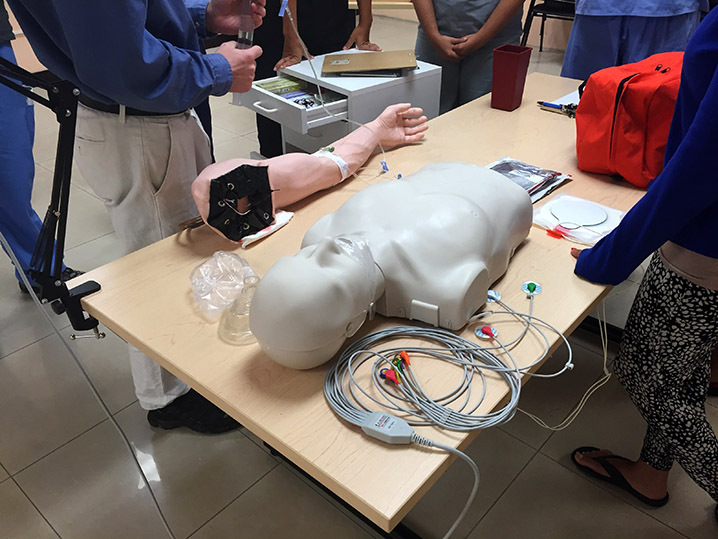In the realm of environmental testing, the walk-in stability chamber stands as an indispensable tool, offering unparalleled control over temperature, humidity, and other environmental conditions. These chambers are critical for a myriad of applications across various industries, from pharmaceuticals and biotechnology to electronics and automotive sectors. This article delves into the intricacies of walk-in stability chambers, their applications, benefits, and the cutting-edge features that make them essential for rigorous testing and quality assurance.
Understanding Walk-In Stability Chambers
A walk-in stability chamber is a large-scale, enclosed environment designed to simulate a wide range of climatic conditions. These chambers are engineered to provide consistent and reliable conditions for long-term stability studies, accelerated aging tests, and other research and development activities. By precisely controlling temperature, humidity, and sometimes light, these chambers enable the testing of products, materials, and components under various environmental conditions.
Key Features of Walk-In Stability Chambers
1. Precise Environmental Control
One of the primary features of a walk-in stability chamber is its ability to maintain precise control over temperature and humidity. These chambers are equipped with advanced control systems that ensure the environment remains stable, regardless of external conditions. The temperature can typically be controlled within a range of -40°C to 60°C, while humidity levels can be adjusted from 20% to 95% RH. This precision is crucial for ensuring the reliability and reproducibility of test results.
2. Uniformity and Stability
Uniformity and stability are critical parameters in environmental testing. Walk-in stability chambers are designed to ensure that the conditions inside the chamber are uniform and stable throughout the testing period. This uniformity is achieved through the use of high-quality insulation, efficient airflow systems, and advanced control algorithms. The result is a consistent environment that allows for accurate and reliable testing.
3. Customizable Configurations
Walk-in stability chambers are available in various sizes and configurations to meet the specific needs of different industries. These chambers can be customized to accommodate a wide range of test samples, from small components to large products. Additionally, they can be equipped with various accessories and features, such as shelving, lighting, and data logging systems, to enhance their functionality and versatility.
4. Robust Construction
Durability and reliability are essential for walk-in stability chambers, as they often operate continuously for extended periods. These chambers are constructed using high-quality materials and components, ensuring they can withstand the rigors of long-term use. Features such as corrosion-resistant interiors, reinforced doors, and robust insulation contribute to the longevity and performance of the chambers.
5. Energy Efficiency
Energy efficiency is a key consideration in the design of walk-in stability chambers. Modern chambers are equipped with energy-efficient components, such as variable speed compressors, LED lighting, and high-efficiency fans. These features not only reduce energy consumption but also contribute to the overall sustainability of the testing process.
Applications of Walk-In Stability Chambers
Walk-in stability chambers are used across a wide range of industries and applications. Some of the most common uses include:
1. Pharmaceutical and Biotechnology
In the pharmaceutical and biotechnology industries, walk-in stability chambers are essential for conducting stability studies on drugs and biologics. These studies are critical for determining the shelf life and efficacy of pharmaceutical products under different environmental conditions. By simulating various climates, these chambers help ensure that medications remain effective and safe for use throughout their intended shelf life.
2. Electronics and Semiconductor
The electronics and semiconductor industries rely on walk-in stability chambers to test the durability and performance of components and devices under extreme conditions. These tests help identify potential issues related to temperature fluctuations, humidity, and thermal cycling, ensuring the reliability and longevity of electronic products.
3. Automotive
In the automotive industry, walk-in stability chambers are used to test the performance and durability of various components, such as engines, batteries, and interior materials. By simulating harsh environmental conditions, these chambers help manufacturers ensure that their products can withstand real-world challenges and maintain their performance over time.
4. Food and Beverage
Walk-in stability chambers play a crucial role in the food and beverage industry, where they are used to conduct shelf life studies and quality assessments. These chambers help ensure that products remain safe and retain their quality throughout their shelf life, even when exposed to varying environmental conditions.
5. Aerospace
The aerospace industry uses walk-in stability chambers to test the performance and reliability of materials and components under extreme conditions. These tests are essential for ensuring the safety and durability of aerospace products, which are often subjected to harsh environments during operation.
Benefits of Using Walk-In Stability Chambers
1. Enhanced Product Quality
By providing precise and controlled environmental conditions, walk-in stability chambers help improve the quality and reliability of products. Manufacturers can identify and address potential issues before products reach the market, ensuring that they meet the highest standards of quality and performance.
2. Regulatory Compliance
Many industries, particularly pharmaceuticals and biotechnology, are subject to stringent regulatory requirements. Walk-in stability chambers enable manufacturers to conduct rigorous testing and documentation, ensuring compliance with industry standards and regulatory guidelines. This compliance is crucial for gaining regulatory approval and maintaining consumer trust.
3. Accelerated Testing
Walk-in stability chambers facilitate accelerated testing, allowing manufacturers to quickly evaluate the long-term stability and performance of products. By simulating different environmental conditions in a controlled setting, these chambers help reduce the time and cost associated with product development and testing.
4. Cost Savings
Investing in walk-in stability chambers can lead to significant cost savings in the long run. By identifying potential issues early in the development process, manufacturers can avoid costly recalls and redesigns. Additionally, the energy-efficient features of modern chambers contribute to reduced operational costs.
5. Versatility and Flexibility
The customizable configurations and features of walk-in stability chambers make them versatile and flexible tools for a wide range of applications. Whether testing pharmaceuticals, electronics, automotive components, or food products, these chambers can be tailored to meet the specific needs of different industries and testing protocols.
Cutting-Edge Features and Innovations
As technology continues to advance, walk-in stability chambers are evolving to incorporate cutting-edge features and innovations. Some of the latest advancements in these chambers include:
1. Advanced Data Logging and Monitoring
Modern walk-in stability chambers are equipped with advanced data logging and monitoring systems that provide real-time information on environmental conditions. These systems enable users to track and analyze data, ensuring the accuracy and reliability of test results. Additionally, remote monitoring capabilities allow users to access and control the chamber from anywhere, enhancing convenience and efficiency.
2. Programmable Control Systems
Programmable control systems are a key innovation in walk-in stability chambers. These systems allow users to create and store custom test protocols, enabling precise and repeatable testing. With user-friendly interfaces and advanced programming capabilities, these control systems enhance the functionality and versatility of the chambers.
3. Enhanced Insulation and Construction
Advancements in insulation materials and construction techniques have led to improved thermal efficiency and durability in walk-in stability chambers. These enhancements help maintain stable environmental conditions, reduce energy consumption, and extend the lifespan of the chambers.
4. Integration with IoT and Industry 4.0
The integration of Internet of Things (IoT) technology and Industry 4.0 principles is transforming walk-in stability chambers. IoT-enabled sensors and devices provide real-time data on environmental conditions, equipment performance, and energy consumption. This data can be analyzed to optimize chamber operation, improve efficiency, and predict maintenance needs.
5. Sustainable and Eco-Friendly Design
Sustainability is a growing concern in many industries, and walk-in stability chambers are no exception. Manufacturers are incorporating eco-friendly materials and energy-efficient components into their designs, reducing the environmental impact of these chambers. Additionally, advancements in renewable energy integration and waste reduction contribute to the overall sustainability of environmental testing processes.
Conclusion
Walk-in stability chambers are essential tools for ensuring precision and reliability in environmental testing. With their advanced features, customizable configurations, and wide range of applications, these chambers play a crucial role in various industries, from pharmaceuticals and electronics to automotive and food and beverage. By providing precise control over temperature, humidity, and other environmental conditions, walk-in stability chambers help manufacturers improve product quality, ensure regulatory compliance, and achieve cost savings. As technology continues to evolve, these chambers are incorporating cutting-edge innovations that enhance their functionality, efficiency, and sustainability, making them indispensable for rigorous testing and quality assurance in the modern world.
For more detailed information on walk-in stability chambers, you can refer to the product details provided by CM Envirosystems.

